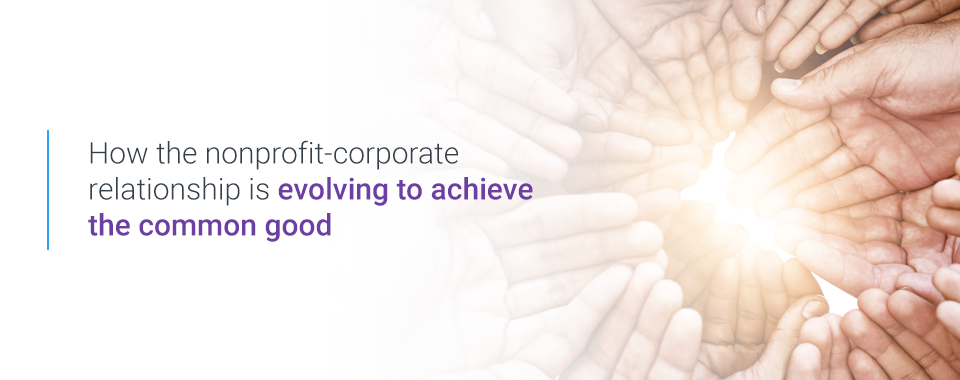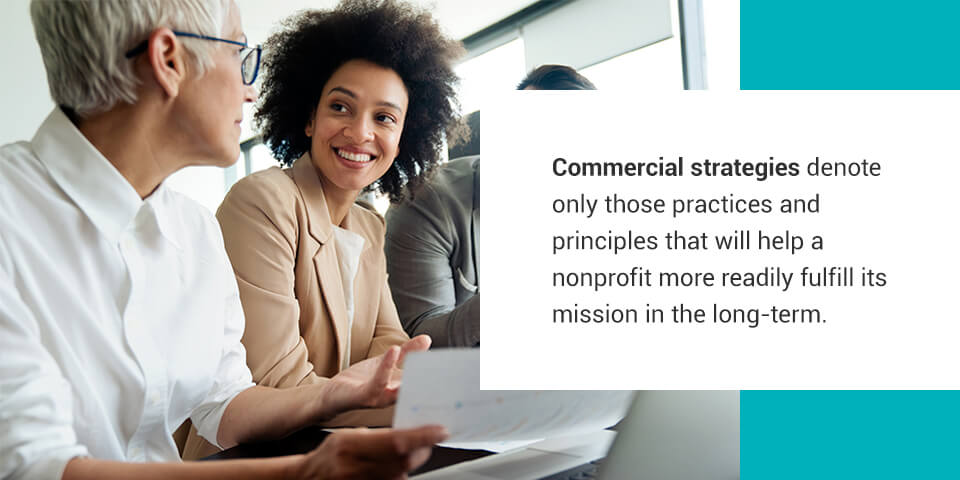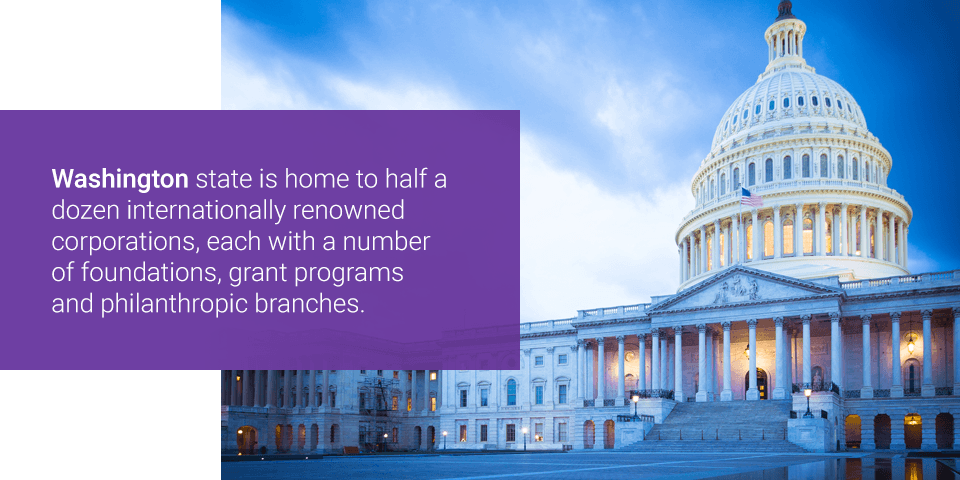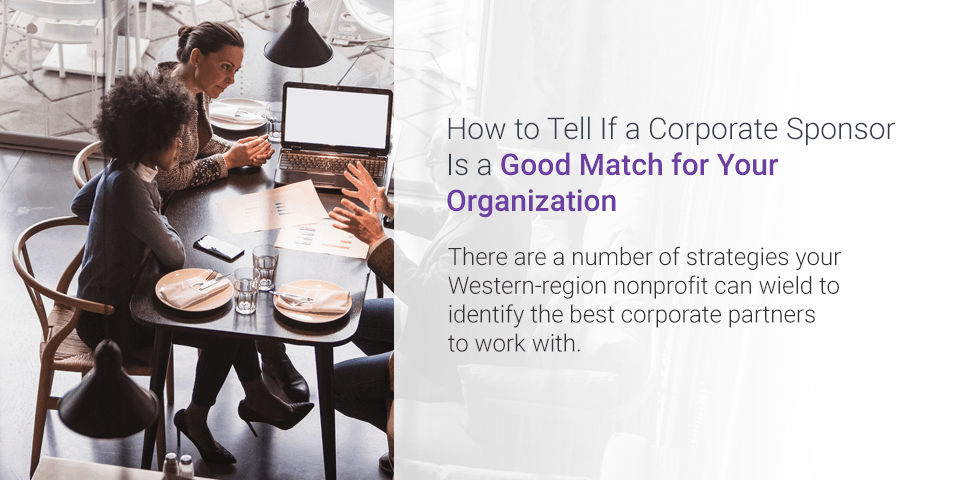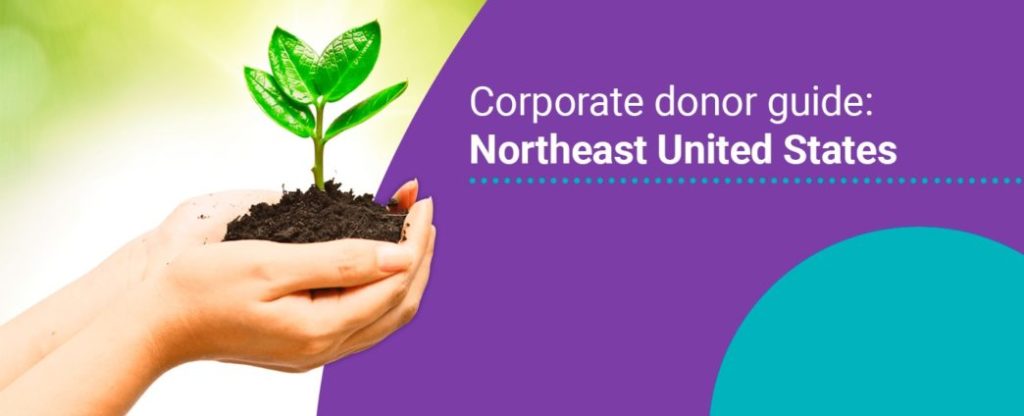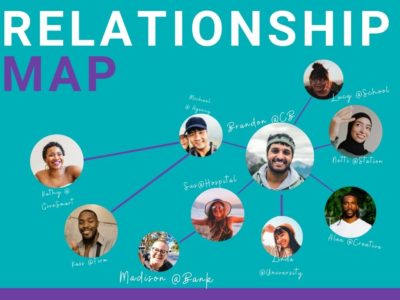Mar 10, 2022
Corporate donor guide: Western United States
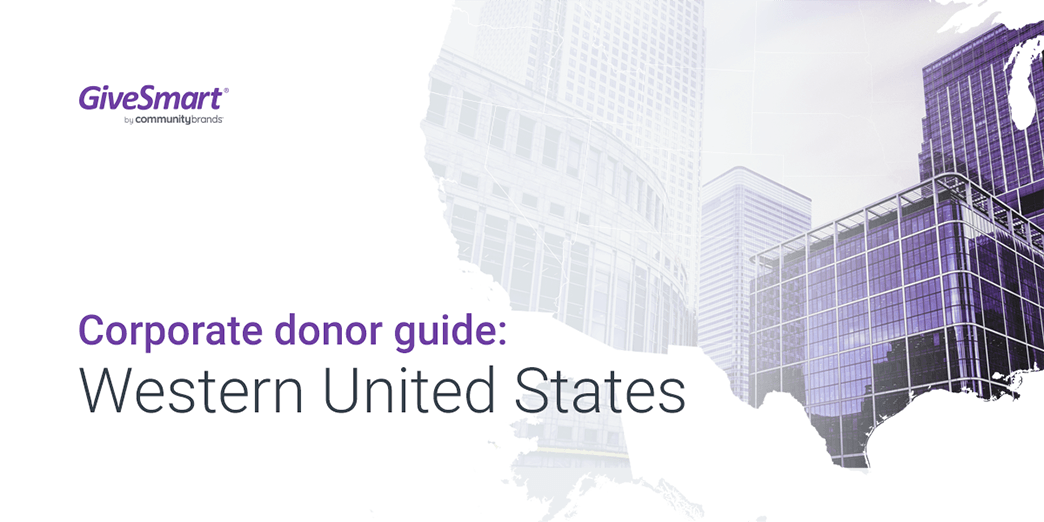
Rugged mountainscapes, golden deserts, picturesque coastlines, and a list of world-renowned cities — the Western United States is a slice of America itself, with its charities representing the best of what our communities can be.
To honor the work of this region’s nonprofits, we’ve compiled a Western United States Corporate Donor Guide for 501(c)(3) organizations across 11 western states. Its goal is simple — to make the search process easier for charities to connect with local and regional companies to form sustained philanthropic partnerships, therefore amplifying community impact.
In this guide, you’ll find:
- A western state-by-state breakdown of corporations with prominent philanthropic activity, including Alaska, California, Colorado, Hawaii, Idaho, Montana, Nevada, Oregon, Utah, Washington, and Wyoming
- How to tell if a corporation is a good fit for you
- Tips for pitching to the right organizations
- How to support more sustainable event fundraising
- And more!
Get access to the additional city and regional donor guides on our blog and fundraising resources page.
Western states corporate donor guide: an overview and how to use this guide
Corporate donation guides bring actionable insights into identifying, positioning, and securing the right kind of sponsors and partners for your western-state nonprofit.
The need for such partnerships is tremendous. Government support for nonprofits, namely in the form of the parent Community Development Block Grants program, which was formed in the 1970s, has faced several issues over the years. Funding that’s not keeping pace with inflation and changing definitions of who qualifies for support are just a couple of them. On both national and local fronts, organizations must find creative yet sustainable ways to bridge a once primarily government-funded industry while competing with more nonprofits than ever.
This guide highlights four primary fundraising topics:
- Corporate sponsor ideas for nonprofits in 11 western states
- How to find the right corporate sponsors for your nonprofit
- How to pitch yourself to those sponsors
- What else your organization can do to create and support sustainable fundraising models, today and tomorrow
Outlined below are the importance of each domain — as well as an overview of how you can turn each from insights into action.
1. Identifying corporate donors by state
It’s one thing for your nonprofit to name corporate sponsors as a top strategic goal. It’s an entirely new undertaking to enter the arena of corporate sponsorships, positioning yourself as the primary organization a company should work with — giving their time, their money, and their talent to build an authentic, mutually beneficial relationship.
We include some of the most generous and philanthropically involved businesses in your state. Specifically, this guide covers corporations in:
- Alaska
- California
- Colorado
- Hawaii
- Idaho
- Montana
- Nevada
- Oregon
- Utah
- Washington
- Wyoming
2. Finding the right corporate sponsors for your nonprofit
Not all corporate sponsors are made equal. Some are recent converts to philanthropic work, while others have built the foundation of their brands around social involvement. Still, others may be awakening to the rise of conscious consumerism — the growing movement amongst shoppers to only purchase from and interact with brands perceived as committed to the greater good.
Whatever the motivation, finding the right corporate sponsor means selecting companies that display:
- Clear value and mission alignment
- Employee buy-in
- Improved brand perception — for both parties
3. Pitching partnerships to ideal corporate sponsors
Once you’ve found a corporation with suitable values and philanthropic leanings, it’s time to make your pitch. Use this guide for tips on when to approach a prospective partner, what information to present, language, and materials to provide — plus what you can offer in return for their generosity.
4. Supporting more sustainable event fundraising models and pipelines
Sustainability is a top concern for today’s nonprofits. From event management and fundraising campaigns to donor re-engagement and event attendee communications, nonprofits must move away from the “one-and-done,” in-situ tactics and activities that may sustain them on a month-to-month, year-to-year basis but not a strategic, growth-oriented one.
Continue reading this guide for individual deep dives into each of these four domains, which your nonprofit can harness for more successful corporate donations in 11 Western-region states.
How the nonprofit-corporate relationship is evolving to achieve the common good
Thanks to the mounting popularity of conscious consumerism, companies have begun to shift their philanthropic focus away from one-off check-writing into deeper, ongoing initiatives with measurable social outcomes.
The nonprofit-corporate donor partnership is vital to creating and maintaining efforts that contribute to a healthy, happy society — efforts like:
1. Raising awareness around important topics
Corporate sponsors add legitimacy to a nonprofit’s public image as well as widen the impact and reach of advocacy efforts.
This relationship is part of what’s known as actual social return on investment. Actual social return on investment is the quantitatively backed findings on how your corporate-sponsored programs or initiatives have made a measurable, positive impact in your community. Like any return-on-investment calculation, it says for every dollar or hour invested into your programming, you’ve generated two, three — even four or more times the economic value.
Without corporate partnerships amplifying their actual social investment returns, the following issues wouldn’t be able to generate the impact they do:
- Human rights, health, and safety
- Animal welfare
- Environmental education and protection
- Disaster relief
- Social equity services
- Workplace readiness
- Military and veterans support
2. Funding advanced research
Corporate sponsorships help fund much of today’s cutting-edge research across medicine, science, technology, and more. Through things like corporate endowments or company-sponsored research grants, nonprofits can retain multi-year funding to execute research endeavors solving today’s most pressing problems. Their findings, as well as goods or products produced during research, have the potential to benefit the entire world, certainly reaching beyond their immediate community.
3. Integrating commercial strategies
Nonprofits that partner with the right corporations can also learn how to incorporate more stable, growth-oriented commercial strategies into their business models to operate with further sustainability.
It’s important here to note the difference between “commercial strategies” and “commercialization.” Nonprofits are still mission-driven — not profit-driven. Commercial strategies denote only those practices and principles that will help a nonprofit more readily fulfill its mission in the long term. Such strategies might include:
- Marketing and PR development
- More reliable revenue streams
- Appropriate merchandising
- Suitable organizational charts
- Annual and long-term strategic planning
- Nonprofit investment strategies
- Enterprise software-as-a-service
4. Stabilizing ongoing nonprofit initiatives
Today’s nonprofits can only achieve their vision for a stable common good when they themselves are stable — that is, when day-to-day finances, operations, communications, and public relations run smoothly and predictably.
Reliable internal operations directly translate to wider public impact. The corporate-donor relationship can help infuse stability into a nonprofit’s internal and external operations, either through donations, grants, or pro-bono work across the following:
- Fundraising efforts
- Revenue generation models
- Legal counsel
- Strategic planning
- Marketing and advertising
5. Thinking global, acting local
The popular mantra to “think global” but “act local” fits right into today’s corporate-nonprofit evolution. By securing corporate donors, your nonprofit is better equipped with resources to address real-world community issues. You can also harness the power of civic participation in your very own community, mobilizing individuals into groups, and inspiring those groups to turn their private initiatives into recurring, dedicated actions.
Western United States corporate donors by state
Below, we’ve broken down 11 states in the western region of the United States and their top local or regional corporate donors. From generous grant programs and direct in-kind sponsorships to ongoing community development initiatives, these companies have expressed commitment to working with nonprofits in their areas.
1. Alaska
The rugged, breathtaking state of Alaska is home to just over 732,000 people sprinkled across the largest state in the union. According to data from the National Council of Nonprofits, over 44,000 people — accounting for 17% of the state’s employment — are employed by a nonprofit, making it the third-largest sector in the state, behind only oil and government work.
With the majority of its populations concentrated in the cities of Anchorage, Fairbanks, Juneau, and Wasilla, nonprofits tend to maximize their efforts in these areas, focusing on economic development, environmental education and preservation, animal welfare, and youth empowerment.
Top corporate donors in Alaska include:
- Alaska Communications
- Alaska USA Federal Credit Union
- Alyeska Pipeline Service Company
- Costco
- Wells Fargo
2. California
The size and diversity of The Golden State are matched by the scale and range of its nonprofit organizations. California has over 110,000 registered nonprofits, with volunteers offering the equivalent of 331,058 full-time jobs in unpaid labor. Corporate donors and partnerships step in to bridge the operational gap, allowing California nonprofits to accomplish significant strides in human rights, disaster relief, urban renewal, the arts, youth empowerment, ecological preservation, education, housing, and social services.
Some of the foremost corporate donors in California include:
- The Academy of Motion Pictures Arts & Sciences Foundation
- American Airlines
- CISCO Foundation
- Disneyland — Program temporarily suspended
- Gilead Sciences
- The Habit Burger Foundation
- Nutiva
- The Sobrato Organization
- Petco
3. Colorado
Snowcapped mountaintops mix with large, urban sprawls in the Centennial State. Yet Colorado is home to a brimming nonprofit scene with particular attention on the arts, social welfare, human rights, health, and hunger initiatives, as well as professional and scientific services. More than 25,000 registered nonprofits employ over 8% of the state’s population, generating nearly $32.1 billion in revenues.
Consider any of these state-headquartered companies when looking for corporate donors in Colorado:
4. Hawaii
The Hawaiian Islands may be the most geographically remote of all states in the U.S. Yet corporate donations and philanthropic partnerships keep the aloha spirit thriving between its citizens, corporations, and charities. Corporate sponsors play a significant role in the sustainability and resource amplification of Hawaiian nonprofits, with particular attention paid to ecological preservation, social services, disaster relief, cultural heritage preservation, economic empowerment, and military/veterans affairs.
Top nonprofit corporate donors in Hawaii include:
- Hawaiin Electric Industries
- Bank of Hawaii
- Stars of Paradise Tours & Attractions®
- Hawaii Medical Services Association
- Hawaii Community Foundation
5. Idaho
Sure, it might be nationally renowned for its potatoes. Yet Idaho’s more than 7,600 active nonprofits partner with hundreds of corporate donors each year to enhance program and service offerings as well as amplify fundraising efforts. Many of Idaho’s nonprofits work in tangent with state interests, including STEM initiatives, agricultural awareness, food sustainability, workplace readiness, human health services, and the arts and humanities.
Corporate donors in Idaho include:
- Boise Cascade
- Idaho Central Credit Union
- Albertsons Companies Foundation
- Hormel Foods
- Darden Restaurants
- Micron Technologies
6. Montana
Big Sky Country is home to some of the nation’s most iconic parks and nature preserves, including Glacier National Park and a part of Yellowstone. Its economic fingerprint — and many of its nonprofit charities — pay homage to this distinct state by focusing on close-to-home causes like environmental preservation, awareness and education, animal welfare, youth opportunities, food accessibility, and workplace readiness, particularly in STEM fields, ranching, lumber, and healthcare.
Montana’s foremost corporate donors and philanthropic organizations include:
- Big Sky Resort
- Glacier Bank
- The Toggery
- Albertsons Companies Foundation
- Murdoch’s Ranch and Home Supply
- Montana Rail Link
7. Nevada
Nevada’s 3 million residents are served by roughly 7,200 charities delivering dozens of direct assistance, education, and renewal services. The state’s charities place particular emphasis on health services and social wellness programs, as well as continuing education opportunities, youth empowerment, financial literacy, STEM development, and the arts.
Major corporate donors in Idaho include:
- Boyd Gaming
- Lettuce Entertain You Restaurant Group — Program temporarily suspended
- Las Vegas Sands
- MGM Resorts International
- Nordstrom
- Build-a-Bear
8. Oregon
The Beaver State encompasses much of the personality and geography for which the Pacific Northwest is famed — plus a vibrant nonprofit sector serving its 4.2 million residents. With concentrations in the cities of Portland, Eugene, Salem, Gresham, and Hillsboro, nonprofits in Oregon have many corporate donors to pitch when seeking to amplify program impact.
Some of those top corporate donors in Oregon are:
- Daimler Trucks North America
- Lithia Motors
- Reser’s Fine Foods
- Slalom Consulting
- Trader Joe’s
- Union Bank
9. Utah
Utah lays claim to over 10,000 nonprofits, an impressive number for its 3.2 million residents. In 2020, almost half of all nonprofits were located in Salt Lake County alone. What’s more, Utah ranks as the most charitable state in America.
Corporate donors in Utah, like the ones below, continually contribute to this state’s impressive nonprofit pulse:
10. Washington
Washington state is home to half a dozen internationally renowned corporations, each with a number of foundations, grant programs, and philanthropic branches. This makes Washington a prime yet competitive nonprofit landscape with many opportunities for value alignment. Charities looking to forge corporate partnerships should ensure to select from businesses with similar values, mission statements, and local community demographics, making a connection that much more intuitive.
Prominent corporate donors in Washington state include:
11. Wyoming
Wyoming’s 3,614 nonprofit organizations employ over 12,000 people — or over 6% of the state’s entire population. The sector contributes a rich array of programming and assistance initiatives across numerous domains, including housing and healthcare, food sustainability, schools, continued education, veterans support, and youth programming.
Top corporate donors in Wyoming include:
- Commerce Bank of Wyoming
- Murdoch’s Ranch and Home Supply
- Wells Fargo
- Western Wyoming Beverages
- Wyoming Community Foundation
How to tell if a corporate sponsor is a good match for your organization
There are a number of strategies your Western-region nonprofit can wield to identify the best corporate partners to work with.
1. They’re headquartered locally
Remember the real-estate adage “location, location, location”? Turns out location is just as important when identifying prospective corporate partners as it is when finding a home.
Companies want to give back to the communities where they’re present. Therefore, a company with a main or regional headquarters in your city makes ideal companies to pitch. Both parties have a stake in keeping their communities healthy, safe and vibrant, and both parties also have personal ties to local people and places.
2. They’ve given to causes and organizations like yours in the past
Research an organization’s past philanthropic activity. You’ll want to note:
- What kinds of organizations they’ve donated to, whether large, multinational, regional, or local nonprofits.
- What causes they’re inclined to work with.
Pitching a sponsorship will be far easier — and intuitive — if the company has a track record working with nonprofits like yours. Just don’t get too caught up in being a perfect, on-paper match. A company that donated to the arts last year may be looking for different causes to support this year, or have a new grant program you’re eligible for.
3. You reach similar or complementary demographics
Say your nonprofit works primarily to support economic opportunities for systemically disadvantaged populations. You perform job-placement services, run career training programs, give out scholarships for continuing education, and host job fairs. Reach out to companies and organizations with a similar goal — perhaps your city’s largest contractor agency or a local university’s business and economics departments. The demographic alignment is already there — you just have to connect the dots.
4. There’s clear value alignment
A company’s mission and values should be more than a slogan. It should exude through their brand and in your interactions with employees, service reps, and those working in or leading their philanthropic branches.
A company’s values will also likely extend into the causes they’ll donate to. Corporations are much more likely to support programs and initiatives that align with their own work. For example, a cosmetics company will see an immediate connection working with nonprofits on women’s economic empowerment and leadership initiatives, just like a trucking company may find value working with environmental nonprofits.
How to be the kind of nonprofit corporations want to sponsor
There are dozens of tips and tricks to make your nonprofit the apple of local corporate donors’ eyes. Here are our top five.
1. Prove your relevancy and impact
Contact companies with strong values and philanthropic goals listed on their websites or within marketing materials. Using their own language, illustrate exactly how your nonprofit is a real-world match to those values — one they’d be hard-pressed to find elsewhere.
As the cherry on top, highlight how your nonprofit tackles contemporary and pressing problems right where the business or company is located. Use numbers and case studies to ground your work. The more you can assign numbers to real-life community involvement, the more you testify to the relevancy and weight donations carry.
2. Produce a media kit
Media kits are pre-assembled materials that give corporate donors a sense of who your nonprofit is and what it’s about. Distribute your prepared kits every time you pitch a new corporate donor. It proves your professionalism as well as gives a more holistic look into the nature of your work.
Your nonprofit media kit should include:
- Email or letter appeal templates
- High-quality photography of past events or programs
- Sample social media posts
- A calendar of events
- Website directory
- Written or video testimonials from other donors, as well as from those impacted by your nonprofit’s causes
- A brief thank-you message
3. Provide employee opportunities
The majority of corporate donors want to do more than write a one-and-done check. Nonprofits that include ongoing employee volunteer or professional development opportunities in their pitches show their commitment to a truly collaborative partnership, not just a payment. Your organization can offer:
- Special employee outings
- Service or volunteer opportunities
- Free professional development courses
- A free venue for out-of-office gatherings
4. Give thanks
There’s no such thing as over-thanking when it comes to corporate sponsorships.
Be demonstrative and creative in your appreciation, both formal and informal. Post about corporate donors on social media, spotlight their employees and contributions, send them your nonprofit branded gear, make them special gifts, and host private events honoring their partnerships. Just remember — never name a sponsor’s specific products or services. Doing so nulls the tax-write offs and classifications of any corporate contributions, turning it from a donation into an advertisement in the eyes of the law.
5. Remember: It’s a marathon, not a sprint
Corporate donors seek out nonprofits that’ll provide lasting partnerships. Long-term collaboration is much more attractive — and more impactful — than a few situational transactions. As early and detailed as possible, describe the ongoing ways partnering with your nonprofit will benefit a business’s employees and its brand.
How to grow your fundraising events from year to year
Nonprofit fundraising strategies are ever-evolving. Nonprofit organizations are better positioned than ever to host a range of fundraising events, using software to track real-time activity, make funding goal tweaks and then launch again next year, bigger and better.
1. Employ event management software
Nonprofit event management software simplifies much of the behind-the-scenes operational work that goes into hosting a charity function. From one program, you can more effectively:
- Track revenue streams, from fundraising auctions and direct donations to merchandise and item sales.
- Manage fundraising campaigns during and after launch.
- Communicate with event attendees and donors, such as sending donation receipts or real-time bid updates for an online auction item.
- And more, all in one system for you to analyze and improve for next year.
2. Have a strong social media presence
How active is your nonprofit on at least one social media platform? If not, your organization is missing a vital public relations and branding opportunity to grow name recognition as well as amplify fundraising news and events.
Social media brings functional benefits, and dynamic social media pages legitimize your nonprofit — plus, social media is the preferred method of research and communication for some demographic groups today.
Consider adding or using social media for the following:
- Schedule content calendars with pre-determined posts, so you never “go silent” for a day
- Employ chat functions to talk in real-time with guests or constituents
- Live streaming events, announcements, and more
- Tagging corporate donors and volunteers in thank-you posts
3. Adopt online donation and payment platforms
Text-to-donate campaigns and digital pledges are more popular — and achievable — than ever. What was once regarded as a passive and disengaged way to seek donations is now one of the top fundraiser-generating mediums on the market, supported by an increasing body of digitally literate donors.
Nonprofits can use special text-to-donate campaign software to fundraise. They can also leverage fundraising software, in tandem with popular payment or donation platforms, like Apple Pay, to safely receive further online donations.
4. Create engaging, shareable content
Use your nonprofit’s website for content marketing, a marketing strategy that creates informational materials like videos, blogs, and infographics to promote interest and engagement with your organization.
Your nonprofit can easily create and publish any of the following content:
- Blog posts
- Videos
- E-newsletters
- Infographics and images
- Photo galleries
- User-generated content
5. Optimize for mobile
Over 57% of all Internet traffic now occurs via smartphone or tablet. Therefore, your website, event announcements, and donation page should be optimized for mobile formatting, meaning when someone pulls your website up on their smartphone, it displays attractively on their screen.
6. Set up and promote reoccurring online giving
Recurring online giving can compound into long-term financial stability for your nonprofit. It is the primary way to garner a steady stream of donation-based income. This allows your nonprofit employees and volunteers to focus on innovative, creative goal achieving and long-term growth efforts. Plus, reoccurring online donations can be simple, automatic, and customizable, allowing donors to remain easily engaged with your nonprofit over extended periods — a true win-win for your mission.
Further resources on finding and managing corporate donors in your area to bring fundraising to the next level
GiveSmart’s suite of event fundraising and management software was built by people in the nonprofit sector for people in the nonprofit sector. Engage more donors and compound more donations with its simple, user-friendly, and multi-functional fundraising platform.
Bookmark this western-state regional guide for future fundraising and donation ideas — then reach out to a GiveSmart rep for your free software demo today.
Related



